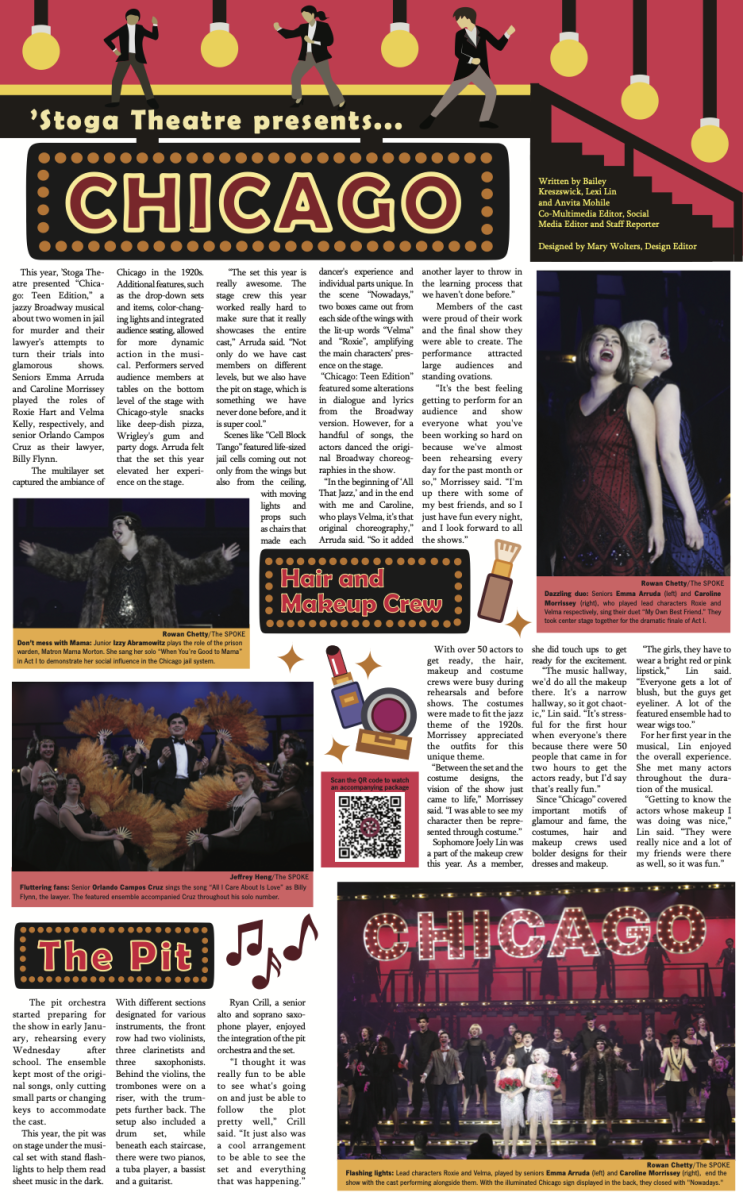By Evan Lu, Co-Editor in Chief
My first interaction with a Master of the Tangent was in 5th grade. I don’t remember most of my 5th grade teachers, but I couldn’t forget Ms. Crocker if I tried. She was my math teacher, a tall woman with wispy gray hair and a fiery attitude. The reason I remember Ms. Crocker isn’t because of her teaching ability — sure, she was good at helping students understand material, but not significantly better than any other teacher. Nay, Ms. Crocker was memorable for her legendary tangents.
And oh, what tangents they were! Once, she broke into a tale of witnessing a gust of wind blow an old lady into a puddle in Chicago. Another time, class began with a lesson on distance equations and ended with a long rant on the excessive amount of air in Dorito bags.
As I rose through the ranks of middle school and then high school, I noticed that the best teachers liberally seasoned their classes with tangents. One yakked about her cats and gabbed about Fig Newton commercials. Another jumped from a review of the previous night’s homework to a discussion of personal experiences with roadkill (deer, ducks, beavers, and more: you name it, a mom driving to Walmart killed it). Yet another teacher spontaneously launched into an extensive account of his life story, complete with drug violence and South Philly accents.
Those times in class when the lesson swerved (never by design) into some esoteric idea, random conception, or half-baked thought were always my favorite. There is something deeply liberating about ignoring the predetermined lesson plan and enjoying a laidback sidetrack, like a child might feel while stealthily swiping a snack from the cookie jar. Yet some teachers are vehemently opposed to tangents. We all know this person: when they see the class making for the abyss of tangential discussion, they seize the joystick and yank the discussion back on course. To them, tangents serve no purpose. Tangents derail the agenda and detract from teaching. Tangents have no measurable benefit or obvious connection to course content. Tangents are a waste of time. Period.
But do tangents truly hold no purpose? The answer depends on one’s approach to teaching. If your goal is to satisfy an agenda, then forget about tangents. But, if your goal is to build a space where students leave at the end of each day yearning to come back tomorrow, the tangent serves a much higher purpose. The effects are staggering. Oftentimes, tangents give students–and teachers–a much-needed break from the regularly scheduled programming of school, brightening their day and minds. Tangents create class bonds, engage students in conversation and argument, and encourage participation. Teachers can allow their humanity to shine through, showcasing their sense of humor and facets of their personalities that are usually tucked away. The ultimate purpose of education is to inspire intrinsic motivation and intellectual curiosity. To this end, tangents are some of the most powerful weapons in the educator arsenal. Period.
There’s a reason that few teachers have mastered the art of the tangent. Just as other arts like archery and carpentry, “tangentry” requires a refined touch that comes only from practice (without fail, the tangent black belts are always the more experienced educators). To make it worse, the effect of a tangent is indefinable. The effect is intangible. The effect is unmeasurable by any traditional metric. Indeed, the best metric for measuring a tangent’s effect is not test scores or grades, but through close observation. Boston Philharmonic Orchestra conductor Benjamin Zander puts it best: “I realized that my job was to awaken possibility in other people. You know how you find out if you’re doing that? You look at their eyes. If their eyes are shining, you know you’re doing it.” This lesson applies to teachers and students just as it does to conductors and musicians, or coaches and athletes, or parents and children. The tangent is not just fun and memorable, but useful and impactful.
Plans and agendas still deserve a spot on the lineup, but the tangent is a varsity player too. So, if you’re a teacher, try something new; the next time your class is veering off track into the world of tangents, embrace the unknown and dive headfirst into the breach. And don’t forget to watch their eyes.
Evan Lu can be reached at [email protected]






















































































